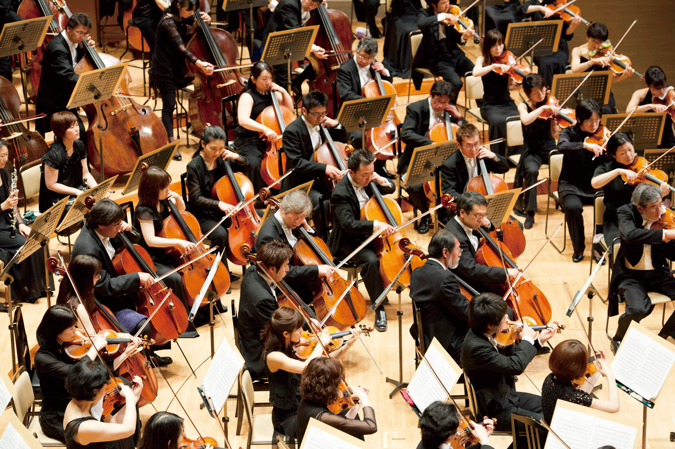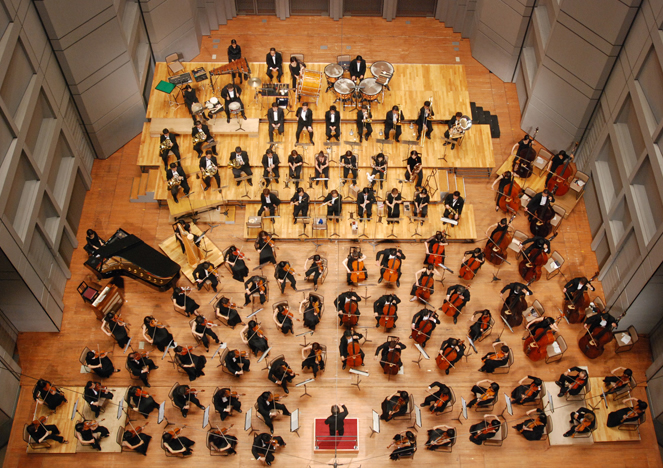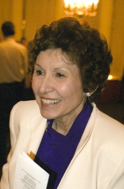INFORMATION DETAIL
Update on Mar 9, 2014, Sun

Classical music in Japan has deep roots that go back to the 1880s, from which time it has flourished widely in every genre. The 1860s and 1870s had been turbulent years in Japan, causing cultural rifts and unsettling the world of music in its wake. The collapse of the Shogunate and the Westernizing policies of Emperor Meiji's new, long reign into the 20th century brought not only the fruits of the Industrial Revolution to the country, but it also caused a tsunami of cultural changes that altered the landscape in astonishing ways. Kimonos and swords were out; frockcoats and beards were in. Even music was turned on its head. The nation's own superb 1,300-year-strong musical instrumental traditions were banned from the schools in favor of the Western music "machines": pianos, levered winds, violins, pipe-organs and other high-tech orchestral instruments. As a result, the only compulsory music education in Japan for more than a century, and to this day, has been classical music. Cities in Japan today have large and faithful classical music audiences; Tokyo itself supports six major professional symphony orchestras; television provides a daily feast for classical music fans; classical music publications abound on magazine racks; and as we all know, Japan has given birth to a cornucopia of classical music performers and conductors second to none on the world stage.
 |
The Tokyo Philharmonic Orchestra, Japan's oldest symphony orchestra, has always been at the forefront in a wide range of classical genre from symphonic to ballet to opera. It is now the only orchestra in Japan that maintains full annual subscription seasons of both symphonic music and of operas as well. It is, therefore, a special privilege for us in New York, as it is for subsequent audiences in Europe and Asia, to welcome for the first time this dynamic orchestra under the distinguished baton of Eiji Oue on its 100th anniversary world tour. Actually, they come to us three years late. Founded in 1911, the Tokyo Phil had planned its celebratory world tour to be held in 2011. The disastrous earthquake and tsunami on the Northeast Tohoku coast that year, however, made celebration totally out of the question.
Perhaps, however, the delay since these traumas of 2011 ─ that three-year interlude ─ is what led the orchestra to a reevaluation of its planned repertory. Originally the orchestra had planned to celebrate with audiences abroad playing classical works familiar to us all in that special voice for which the Tokyo Phil is noted. But during these past three years some deep search seems to have taken place. It is no longer the question "What is the classical music we love to play and audiences love to hear?" The question seems to have shifted to "What does our music making mean to mankind?" "How is it that it bonds us and brings us together in times of trouble?" "Music ─ one of human beings' most crucial modes of expression of their deepest felt needs and closest sentiments ─ just what is that music?" It would seem that in destabilizing times there is comfort in turning to one's roots and to one's community. Tchaikovsky, for example, in years of trouble and searching, turned to history, and to deeply embedded Russian folk music. In France his music was panned as "common," and "vulgar." But clearly embracing his own Russian soundscapes opened floodgates of need and emotion, and our ears, at first resistant and used to a different musical culture, have now grown accustomed to it and even crave it. Stravinsky, too, whose cultural soundscapes were multiple, plunged into the sounds that resonated with him. Both, too, became deeply involved in regional dance.
On reexamination, the Tokyo Phil has been emboldened to add to the repertory of their tour the works of two 20th-century Japanese classical composers daring and difficult, who nonetheless, like Tchaikovsky and many others, turned for their own reasons to music that rose from deep in their own culture. Toshiro Mayuzumi (1929-1997) turned to Japan's (and the world's) oldest orchestral music, the 1300-year-old Gagaku that accompanies the sacred dancers of Bugaku. Kiyoshige Koyama (1914-2009), on the other hand, embraced the naturally evolving songs of villagers and the essence of community festival days.
Mayuzumi, a contemporary of Messiaen, Menotti, Takemitsu, Stockhausen, Cage, and Bernstein, graduated from the conservatory in Tokyo, studied in Paris, then returned to Japan for a brilliant career as avant-garde composer and dynamic conductor. The Tokyo Phil has chosen to present Mayuzumi's magnificent Bugaku, a work that Mayuzumi himself liked to conduct as an orchestral work.
 |
The tragic history of Bugaku, however, in my opinion, is twofold. First, what should have omened well, was it had been commissioned by Balanchine to choreograph for the New York City Ballet. He asked Mayuzumi to create a pure non-narrative piece such as he had heard played by the Japanese Imperial Household Agency's Gagaku Orchestra that accompanied Bugaku dancers in a performance Balanchine had had occasion to see in New York in 1959. The resulting ballet, Bugaku (1963), is perhaps one of Balanchine's least successful works. At the first 1963 performance "giggles were heard in the audience" and the Balanchine-added pseudo-Japanese mannerisms of the dancers, as several New York critics objected, “was embarrassing.” The stage had been laid out with authentic Bugaku green carpet and red lacquer fence posts demarking the sacred shrine space on which the ritual male Bugaku celebrants, to the sounds of the Gagaku orchestra, would normally make their reverent gestures of thanksgiving and appeal to the deities who were symbolically in residence. Mayuzumi’s modern recreation did amazingly well to expand the limited sacred Bugaku offertory music into Western orchestration, creatively employing the dissonance systems of both and creating echoes of traditional timbres and rhythms. But when Balanchine replaced the formal male ritualists with young girls in tutus and toe shoes and choreographed the dancers into explicitly erotic duos, the relationship between Bugaku music and dance was broken. We as audience are left, therefore, with our second challenge. If we happen to be unfamiliar with the melodies, timbre, pace, rhythms, and modes that comprise the cosmic sound system of a Gagaku orchestra, we will inevitably fail to grasp Mayuzumi's masterful "quoting" from it in his brilliant Western orchestration score. Since, however, there is no visual aspect to the performance tonight, we are perhaps liberated and left free to ride Mayuzumi's cosmic orchestral waves to wherever our imaginations may unfold.
Kiyoshige Koyama's Woodcutter's Song (for Orchestra) was originally composed as music for a theater piece and was so beloved it appeared in part as themes for various radio pieces and was ultimately revised into this full orchestral form. It contains themes that reflect what Japanese hold most dear and consider the essence of being Japanese: hard work, tenacity, forbearance, neighborhood-orientation, a joy of life that bursts out in communal festival, intoxicating, but never vulgar. The music reflects a love for the scenescapes of home and the soundscapes of Japan.
The work starts with the sound of a woodcutter deep in a mountain forest with the steady rhythm of his heavy handsaw, which we hear through the orchestra's strings, bowed close to the bridge. The music emerges employing all potentials of the 12-tone scale. Then quietly the woodcutter's self-taught song is heard, one man singing to himself. The song eventually passes from one person to another and is finally incorporated into the summer festival music at the nearby village shrine. The piccolo represents the gathering of young voices. Other winds pick up the woodcutter's song and add variations. The full orchestra rejoices as the festival becomes more intoxicating. There is clapping and repeated unison yells as the festival climaxes. Then one day the woodcutter's song is heard to have passed on to the city. Delivery boys hum it. More instruments chime in as the whole city now knows it. Contrary to a swelling Western conclusion, the work ends with a quiet bass-clarinet back in the village, quietly, reflectively humming the woodcutter's original song. If there is comfort food, there is also comfort music. Koyama went in search of his. He seems to tell us how the songs of a people are born, first created by one at work to the rhythm of the labor at hand, then passed on to the village, then spreading through communities and cities, until it becomes tradition and belongs to us all. In the end it is this spirit of music that gives us heart and strength.
Classical music took a century or two to internationalize out of central Europe, and now has become a global phenomenon, loved and enjoyed worldwide, no doubt due in part to the new technologies that give us all immediate access to it. The stranger at the gate comes in and quickly ceases to be strange. Growing familiarity then sparks mutual creativity and joys. At the same time a lament is heard that the various national characteristics and voices of classical orchestras are in danger of merging into an overall global style. May that never come to pass. It is both thrilling and comforting to suddenly grasp that other most important human language, "music", ─ no matter unfamiliar grammar or accents. May the Tokyo Philharmonic wait for no more anniversaries, but bring us yearly more and more from their huge repertory of classical music, not only the Bach and Beethoven they have deep in their bones, but works from Japanese composers who have so much to reveal to us about our own past century of classical music and have so much to say about the world of 21st-century music.
Author Profile
 |
Barbara Ruch / Barbara Ruch is Professor Emerita of Japanese Literature and Culture at Columbia University. Founder and current Director of the Institute for Medieval Japanese Studies: Japanese Cultural Heritage Initiatives, she was also the Founding Director of Columbia University's Donald Keene Center of Japanese Culture. She has been awarded many prizes for her pioneering work in various aspects of Japanese studies, including the Imperial decoration, The Order of the Precious Crown, with Butterfly Crest, which was conferred on her by the Japanese Government in 1999. Since 2005 she has worked to support the renaissance of early Japanese music both in Japan and on the world stage and for the establishment of Japanese instrumental ensembles in American academia.










![BUY TPO TICKETS [03-5353-9522] Business hours: 10:00~18:00 Regular holiday: Sat・Sun・Holiday](../../img/common_en/bnr_inquiry2.png)
